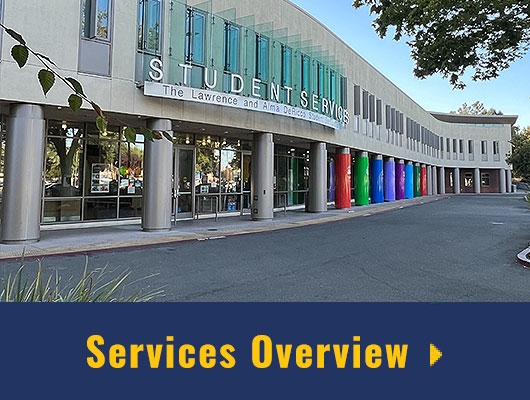Copyright Compliance
Copyright Best Practice
- Determine the amount of copyrighted material that you will use: The lower the amount, the more protection you will receive under fair use. The higher the amount, the more likely you should follow the advice below. Always check if the work falls into a copyright exception.
- Contact the original author for an earlier draft (will often give it to a fellow academic for free)
- Contact the publisher directly to request permission (Can be faster and cheaper than the Copyright Clearance Center)
- Request the Library to put it on reserve for the students to make copies.
- Contact the Copyright Clearance Center to request permission (Note: The CCC helped bank roll litigation by publishers in the Georgia State Case. You may not want them to collect fees from you if they are suing libraries and universities.)
Fair Use for Education
Agreement on Guidelines for Classroom Copying in Not-For-Profit Educational Institutions with respect to books and periodicals
On March 19, 1976, the representatives of the Ad Hoc Committee of Educational Institutions and Organizations on Copyright Law Revision, and of the Authors League of America, Inc., and the Association of American Publishers, Inc. came up with the following agreement. This agreement is found also found in the House Report no. 94–1476. The agreement is significant because it is cited as authority in two major federal court cases on copyright violations involving commercial publishers as well as in litigation.
I. Single Copying for Teachers
A single copy may be made of any of the following by or for a teacher at his or her individual request for his or her scholarly research or use in teaching or preparation to teach a class:
- A chapter from a book;
- An article from a periodical or newspaper;
- A short story, short essay or short poem, whether or not from a collective work;
- A chart, graph, diagram, drawing, cartoon or picture from a book, periodical, or newspaper;
II. Multiple Copies for Classroom Use
Multiple copies (not to exceed in any event more than one copy per pupil in a course) may be made by or for the teacher giving the course for classroom use or discussion; provided that:
- The copying meets the tests of brevity and spontaneity as defined below; and,
- Meets the cumulative effect test as defined below; and
- Each copy includes a notice of copyright.
Definitions
Brevity
- (i) Poetry: (a) A complete poem if less than 250 words and if printed on not more than two pages or, (b) from a longer poem, an excerpt of not more than 250 words.
- (ii) Prose: (a) Either a complete article, story or essay of less than 2,500 words, or (b) an excerpt from any prose work of not more than 1,000 words or 10% of the work, whichever is less, but in any event a minimum of 500 words (Most commonly cited excerpt of the Guidelines).
- (iii) Illustration: One chart, graph, diagram, drawing, cartoon or picture per book or per periodical issue.
(iv) “Special” works: Certain works in poetry, prose or in “poetic prose” which often combine language with illustrations and which are intended sometimes for children and at other times for a more general audience fall short of 2,500 words in their entirety. Paragraph “ii” above notwithstanding such “special works” may not be reproduced in their entirety; however, an excerpt comprising not more than two of the published pages of such special work and containing not more than 10% of the words found in the text thereof, may be reproduced.
Each of the numerical limits stated in “i” and “ii” above may be expanded to permit the completion of an unfinished line of a poem or of an unfinished prose paragraph.]
Spontaneity
- (i) The copying is at the instance and inspiration of the individual teacher, and
- (ii) The inspiration and decision to use the work and the moment of its use for maximum teaching effectiveness are so close in time that it would be unreasonable to expect a timely reply to a request for permission.
- Cumulative Effect
- (i) The copying of the material is for only one course in the school in which the copies are made.
- (ii) Not more than one short poem, article, story, essay or two excerpts may be copied from the same author, nor more than three from the same collective work or periodical volume during one class term.
- (iii) There shall not be more than nine instances of such multiple copying for one course during one class term.
The limitations stated in “ii” and “iii” above shall not apply to current news periodicals and newspapers and current news sections of other periodicals.
III. Prohibitions as to I and II Above
Notwithstanding any of the above, the following shall be prohibited:
- (A) Copying shall not be used to create or to replace or substitute for anthologies, compilations or collective works. Such replacement or substitution may occur whether copies of various works or excerpts therefrom are accumulated or reproduced and used separately.
- (B) There shall be no copying of or from works intended to be “consumable” in the course of study or of teaching. These include workbooks, exercises, standardized tests and test booklets and answer sheets and like consumable material.
- (C) Copying shall not:
- substitute for the purchase of books, publishers’ reprints or periodicals;
- be directed by higher authority;
- be repeated with respect to the same item by the same teacher from term to term.
- (D) No charge shall be made to the student beyond the actual cost of the photocopying.
More Information
- Educational Fair use Guidelines for Distance Education(CONFU)
- Fair Use (Stanford)






